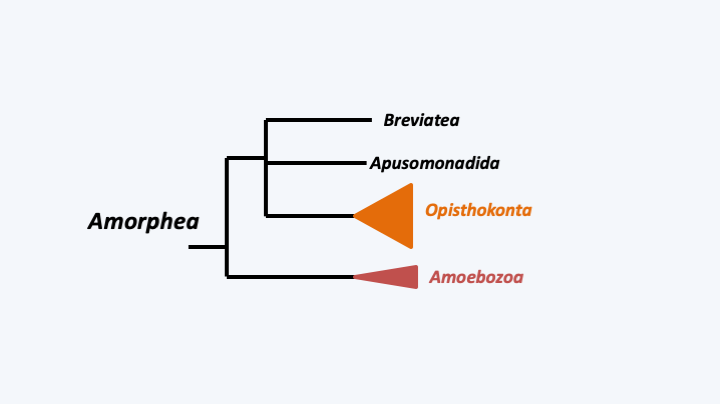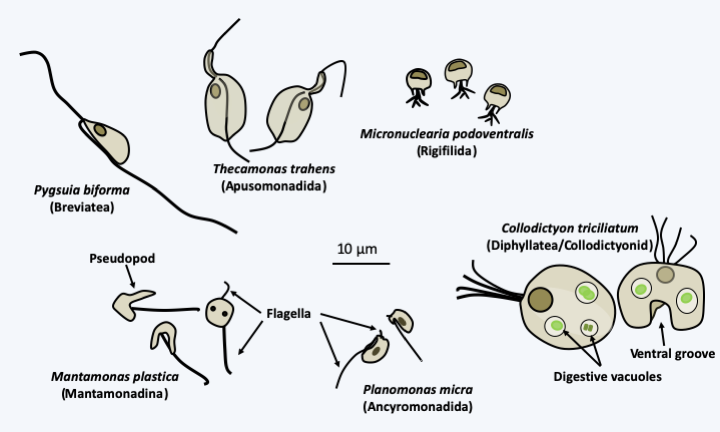Amorphea
Back to main indexThe great lineage Amorphea includes two large monophyletic supergroups, the Opisthokonta and the Amoebozoa, as well as many other lineages known by some species of unicellular organisms (Figure 82). Only molecular phylogenies make it possible to group together these organisms, because they do not show any obvious synapomorphy. In particular, the flagellar apparatus is very variable with organisms having two basal bodies and two anterior flagella like the majority of Amoebozoa, two basal bodies but a single flagellum positioned at the rear like the Opisthokonta, a basal body and flagellum in some Amoebozoa or without basal body and flagellum in most Eumycota, but also some protozoa living exclusively in amoeba form such as the Nucleariida. In addition to these main types, there are many derivations. We know for example genera of Eumycota like Basidiobolus or Coemansia possessing a remnant basal body, or at least what we interpret as such, because it does not contain 9 triplets of microtubules, but 11 or 12 unique microtubules; these fungi do not produce a flagellum. (Figure 83).

Figure 82.
Phylogenetic tree of Amorphea.
Figure 83.
Some species of CRuMs and relatives of Opisthokonts.
Figure 83 shows some of the characteristic flagellate species of Amorphea and their relatives, CRuMs. Most have two flagella positioned in front of the cell, but one of which turns back. Some, like Collodictyon, have four flagella and others, like Micronuclearia, are amoebae with threadlike pseudopodia that emerge from the ventral groove. They are most often protected by a semi-rigid film affixed to the dorsal side. In biflagellate species, flagella are not used to swim but rather to glide on the substrate. These organisms are typical phagotrophs feeding on bacteria and algae via their ventral groove. Because of their interest in understanding the early stages of eukaryotic evolution, these organisms are currently the subject of intense research, in particular the Apusozoa, whose molecular phylogenies indicate that they are the closest relatives of the Opisthokonta (Figure 82). The genome of Thecamonas trahens has been sequenced and the first analyzes suggest that it contains “integrin” proteins, involved in cell adhesion in animals, calcium and potassium channels also typical of animals, and type D cyclins found only among the Eumetazoa! The complete life cycles of these organisms are currently unknown because sexual reproduction has not been observed, but they are likely to be determined in the near future.

Figure 83.
Some species of Amorphea, and their relatives, CRuMs.Back to chapter index